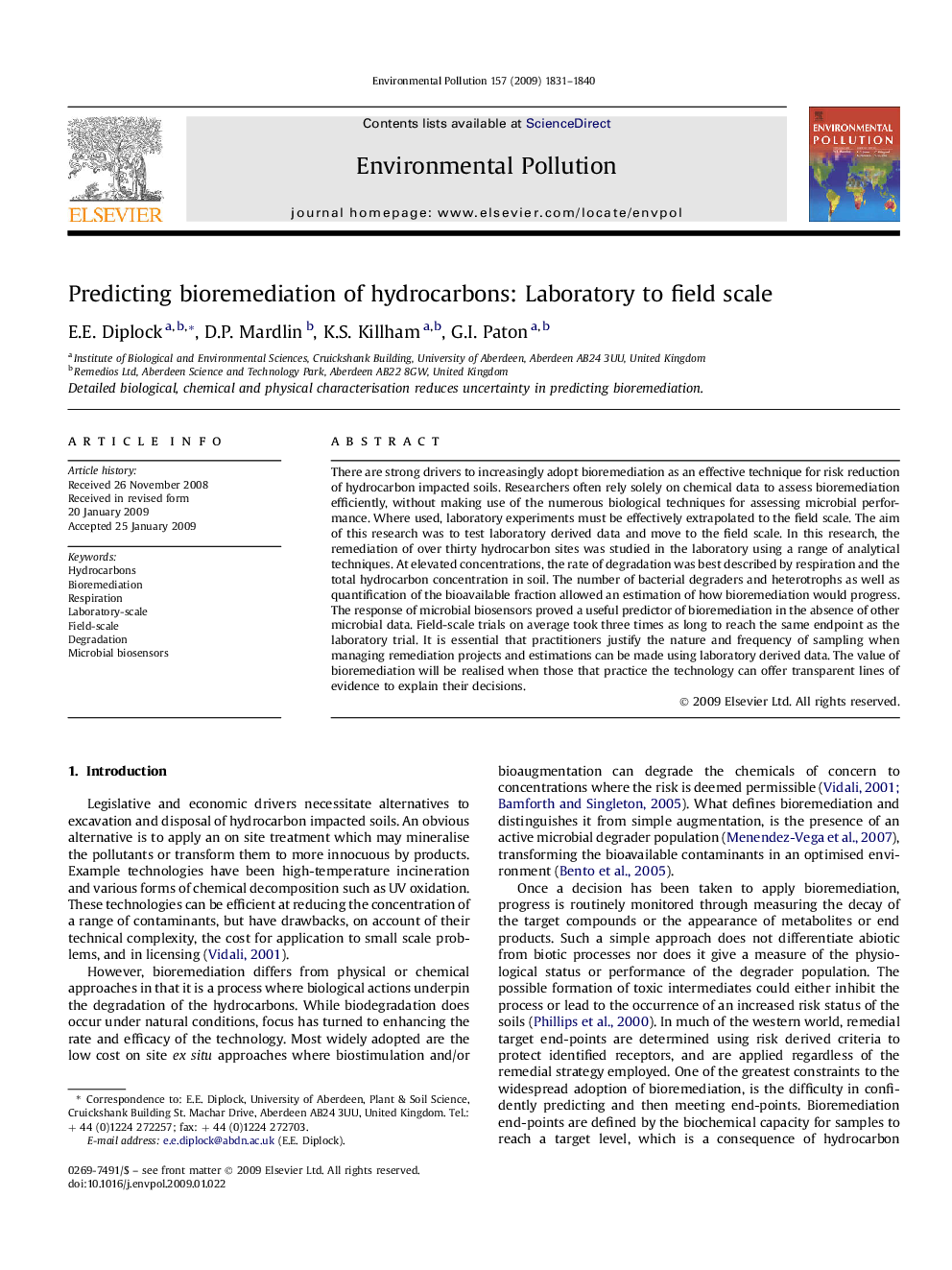| Article ID | Journal | Published Year | Pages | File Type |
|---|---|---|---|---|
| 4425544 | Environmental Pollution | 2009 | 10 Pages |
There are strong drivers to increasingly adopt bioremediation as an effective technique for risk reduction of hydrocarbon impacted soils. Researchers often rely solely on chemical data to assess bioremediation efficiently, without making use of the numerous biological techniques for assessing microbial performance. Where used, laboratory experiments must be effectively extrapolated to the field scale. The aim of this research was to test laboratory derived data and move to the field scale. In this research, the remediation of over thirty hydrocarbon sites was studied in the laboratory using a range of analytical techniques. At elevated concentrations, the rate of degradation was best described by respiration and the total hydrocarbon concentration in soil. The number of bacterial degraders and heterotrophs as well as quantification of the bioavailable fraction allowed an estimation of how bioremediation would progress. The response of microbial biosensors proved a useful predictor of bioremediation in the absence of other microbial data. Field-scale trials on average took three times as long to reach the same endpoint as the laboratory trial. It is essential that practitioners justify the nature and frequency of sampling when managing remediation projects and estimations can be made using laboratory derived data. The value of bioremediation will be realised when those that practice the technology can offer transparent lines of evidence to explain their decisions.
